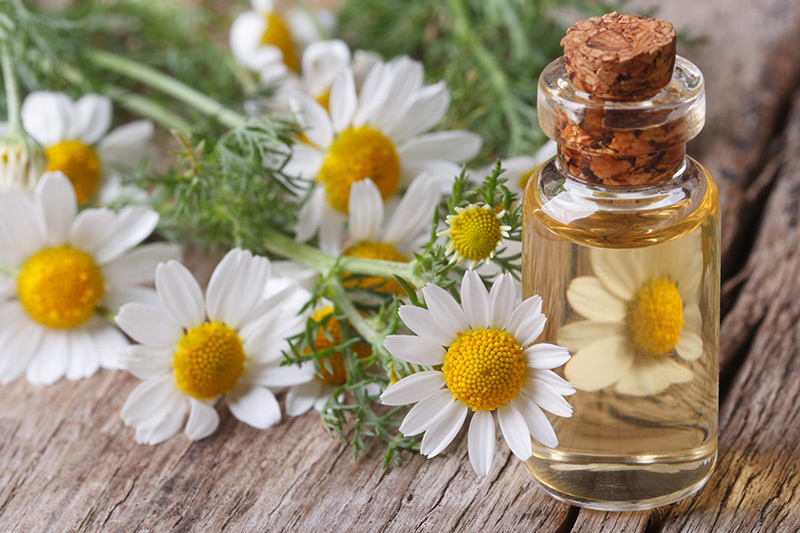Dive Deep Into Tulip Lore with These Surprising Facts
Posted on 21/08/2025
Dive Deep Into Tulip Lore with These Surprising Facts
Tulips: The very word conjures images of vibrant fields and elegant bouquets. But did you know that the story of these iconic blooms is full of twists, turns, and fascinating cultural lore? Whether you're a flower lover or a curious reader, embark on an illuminating journey as we dive deep into tulip lore with these surprising facts and stories. Discover the legends, history, symbolism, and science behind one of the world's most cherished flowers.

The Origins of the Tulip: An Ancient Tale
Where Do Tulips Come From?
Many associate tulips with the Netherlands, and with good reason--the Dutch have become synonymous with tulip cultivation. However, the true roots of the tulip go farther back, all the way to the wilds of Central Asia's mountainous regions.
- The first tulips: Native to the Tien Shan Mountains of modern-day Kazakhstan, Kyrgyzstan, and parts of northern Iran and China.
- Spread to the Ottoman Empire: Merchants and botanists brought tulips to Turkey, where the Ottoman Sultans became captivated by their beauty by the 16th century.
- European fascination: Tulips finally reached Western Europe in the late 1500s, igniting passions that would change the course of horticultural history.
The Name Game: Why Are They Called Tulips?
The word "tulip" is believed to have originated from the Persian word "tulbend" or "delband", meaning turban. This is a nod to the flower's resemblance to traditional headwear of the region. When Ottoman diplomats dazzled Europeans with tulips in their turbans, the flower acquired its new name.
Tulip Mania: When a Flower Sparked Financial Frenzy
The World's First Economic Bubble
Perhaps no story in the world of tulips is as legendary as the episode known as Tulip Mania. In the early 17th-century Netherlands, demand for tulip bulbs soared to astonishing heights, culminating in one of history's first speculative economic bubbles.
- Rare varieties skyrocketed in value, with single bulbs sometimes trading for more than the price of a house.
- The craze peaked in 1637, before abruptly crashing and devastating those who had invested their fortunes in bulbs.
- Tulip Mania is now a cautionary tale, but it also cemented the tulip's place in Dutch lore and popular imagination worldwide.
Why Did Tulips Become Worth Their Weight in Gold?
The most coveted tulips were those with striking patterns and unusual colors. Unbeknownst to growers at the time, these spectacular effects were due to a virus called Tulip breaking virus, which altered the pigments in the petals, causing contrasting streaks of color. Far from being a desirable trait, the virus actually weakened the plant--but its beauty drove prices to dizzying heights nonetheless.
Symbolism and Meaning: More Than Just a Pretty Flower
The Secret Language of Tulips
Across cultures and centuries, tulips have been laden with symbolism. Here are some of the meanings attributed to them:
- Love and passion: In the East, red tulips symbolize perfect love, inspired by a Persian legend of a prince whose blood created a red tulip after his tragic death.
- Royalty and abundance: In the Ottoman Empire, tulips represented luxury, power, and royal gardens.
- Charity and mutual respect: In Dutch culture today, tulips symbolize giving and kindness, with the annual National Tulip Day featuring the public giving away free flowers.
Tulips in Art and Literature
Tulips have left an indelible mark on the world's artistic legacy. Dutch Masters immortalized their beauty with meticulous still life paintings in the 1600s, using tulips to symbolize the fleeting nature of life and material possessions. In poetry and folklore, tulips have been invoked to express love, hope, and even longing for freedom.
Did you know? The famous Turkish poet Sehi Bey wrote an entire anthology dedicated solely to the tulip--known as the "Lale Risalesi"--showing the cultural depth of tulip fascination.
Botanical Wonders: The Science of Tulips
How Many Tulip Species Exist?
Tulips are members of the Liliaceae family, along with lilies, onions, and garlic. Botanists estimate there are about 75 wild species and thousands of cultivated varieties. Every year, breeders develop new hybrids, enhancing color, form, and bloom time.
- Wild tulips: Often smaller than garden types, native tulips display a remarkable range of colors.
- Modern hybrids: Cultivated tulips dazzle in nearly every hue except true blue. Breeders have even produced multi-colored, double-layered, and fringed blooms.
The Tulip's Astonishing Adaptability
Tulips thrive in diverse climates, from rugged mountain slopes to manicured city parks. Their ability to withstand harsh winters and variable spring conditions makes them a springtime staple across continents. In fact, their need for a period of winter cold, known as vernalization, helps trigger their spectacular flowering in the spring--making them a symbol of resilience and renewal.
Tulip Festivals Around the Globe
Celebrating Tulip Time in Style
Every spring, the world blossoms with festivals dedicated to the tulip, each reflecting local culture and history. Here are some must-see tulip festivals with their own unique lore:
- Keukenhof (The Netherlands): Boasting more than 7 million bulbs, Keukenhof Gardens in Lisse is one of the world's largest and most stunning displays.
- Istanbul Tulip Festival (Turkey): Thousands of tulips bloom throughout Istanbul's public parks and gardens, honoring the flower's Ottoman heritage.
- Canadian Tulip Festival: In Ottawa, this event commemorates Canada's wartime hospitality to the Dutch royal family, celebrated with over a million blooming tulips annually.
- Skagit Valley Tulip Festival (USA): Washington State's fields offer vast, kaleidoscopic landscapes that attract visitors from all over North America.
Unusual and Surprising Tulip Facts
Five Fascinating Trivia Nuggets
- Tulips Are Edible: During World War II, food shortages in Holland led people to eat tulip bulbs. Properly prepared, they can be safely consumed, though not all varieties taste pleasant.
- Space Blooms: Tulips have been grown on the International Space Station to study how plants adapt to microgravity, making them a true interstellar flower!
- National Emblems: The tulip is the national flower of Turkey and Iran, symbolizing their cultural heritage.
- Historic Gifting: The city of Istanbul sends thousands of tulip bulbs to parks all over the world as a gesture of friendship and peace.
- Color-Changing Blooms: Some tulips actually change color as they age, an effect caused by pigment breakdown and environmental conditions.
The Modern Day Tulip Craze
With the proliferation of social media and gardening trends, rare tulip bulbs can still fetch high prices among collectors. Uniquely patterned varieties, such as "Rembrandt" tulips, remain particularly coveted. National and local festivals see flower-lovers lining up for "u-pick" events and selfie sessions amidst the blooms.
Tip: If you want to grow your own tulip lore collection, plant bulbs in the fall and ensure they get a chilly winter rest for the best spring display.

Gardening With Tulips: A Legacy You Can Cultivate
How to Grow and Care for Tulips
Want to become part of the centuries-old tulip tradition? Include these beloved flowers in your own garden with these tips:
- Choose healthy bulbs: Select large, firm tulip bulbs for the best blossoms.
- Right timing: Plant in the fall, roughly 6-8 weeks before the ground freezes.
- Good drainage: Tulips do best in sandy, well-drained soil.
- Sunny spots: While they'll tolerate part shade, tulips prefer full sun for maximum color and bloom longevity.
- Post-bloom care: After flowering, allow the leaves to yellow and die back naturally, feeding the bulb for the following year.
Fun Fact: Some species tulips are perennial, returning year after year with minimal care. Hybrid varieties may require a bit more tending or fresh bulbs each season.
Conclusion: The Enduring Allure of Tulip Lore
From ancient mountains to contemporary city parks, tulips have left an indelible mark on humanity's imagination. Their vibrant colors, storied past, and robust symbolism continue to inspire beauty and fascination across generations and continents. Whether you're enchanted by tales of tulip mania, the flower's role in art and science, or the simple pleasure of seeing them bloom each spring, you're now better equipped to dive deep into tulip lore and share these surprising tulip facts with others. Why not plant a few bulbs and start your own tulip legend today?
Latest Posts
Dive Deep Into Tulip Lore with These Surprising Facts
The Secret Language of Peony Flowers: Exploring Symbolism and Colour Meanings
Which Flower's Essence Aligns with Your Soul







